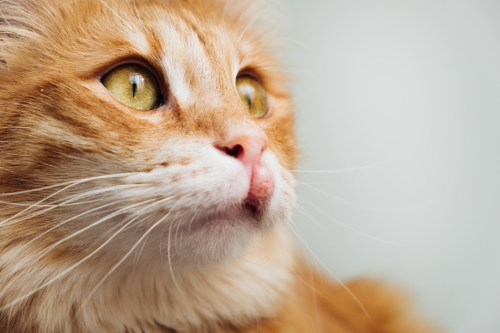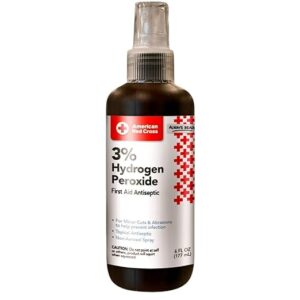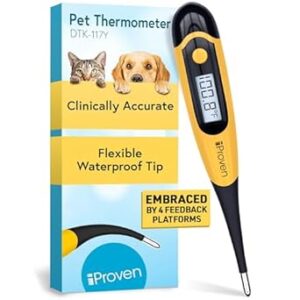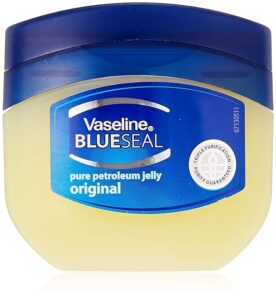What creates a swollen upper lip in your cat
There are many possible causes for a swollen upper lip in your cat. Think of inflammations, infections, allergic reactions, insect stings, dental problems or, in a serious case, a tumor. We also occasionally see thickenings such as warts. Below we will further explain the causes.
An inflammation as the cause of a swollen upper lip in your cat
An inflammation occurs as a result of tissue damage in your cat’s lip. The tissue damage causes certain substances to be released from the cells of your lip. This ensures that a repair mechanism is initiated in your cat’s swollen upper lip. It’s nice that the lip tries to repair itself, but that can cause an enormously swollen lip. Even when your cat has been stung by an insect, swelling can occur as a result of the inflammatory reaction to the poison. In principle, you don’t have to do anything about an inflammatory reaction. But you have to make sure it’s not an infection.
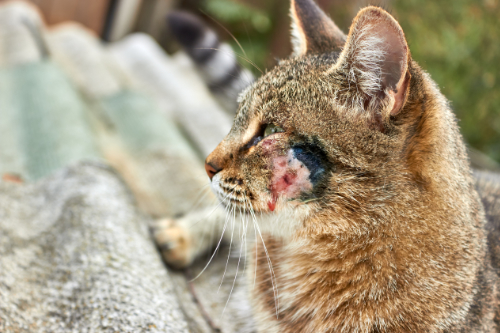
An infection as the cause of the swollen upper lip
An infection happens when a bacterial contamination has arisen in a wound. There is always an inflammatory response to an infection. This often begins, for example, after a fight with another cat. Another cat’s nail or tooth contains bacteria, so a fight can cause a wound on your cat’s lip during a fight, which immediately leaves a few bacteria behind. These bacteria will multiply and the cat’s body will try to clear it up with the help of immune cells. These immune cells are called neutrophils. They are also known as pus cells. This can create a pus-filled cavity in your cat’s lip. That’s called an abscess. If the infection is more superficial, it is more of an infected wound on which pus can be visible.
An allergic reaction in your cat
If there is an allergic reaction, the lips and often other parts of your cat’s body will swell enormously within an hour. This allergic reaction often arises from an insect sting. But we also see this after giving certain medicines for the first time. We also suspect that some cats must have eaten something they are allergic to. Unfortunately, the cats never report what they ate…
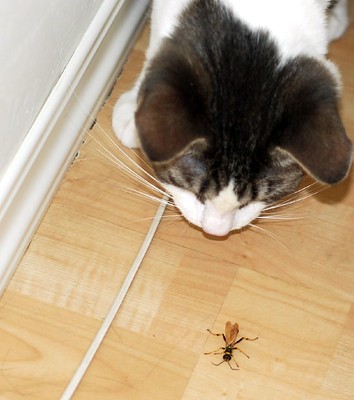
Dental problems as a cause of a swollen upper lip in your cat
Cats can develop dental problems and, as a result, develop inflammation in their gums and lips. The biggest cause of dental problems is tartar. Just like in humans, food creates a layer of dental plaque on the teeth. Since cats do not brush their teeth, minerals can eventually become attached to this dental plaque. This creates tartar. If the tartar becomes too bad, inflammation will occur in the gums and in severe cases also in the lips. If your cat has a swollen upper lip, take a look at the inside of that swollen upper lip. Is the lip on the inside of that swelling also red and is there a lot of brown tartar on the teeth or molars in that area? Then there is a good chance that this tartar is the cause of your cat’s swollen upper lip.
The eosinophilic granuloma complex
Actually, this piece belongs to the first part, the inflammations. The eosinophilic granuloma complex is an inflammation with the appearance of an infected wound. Usually this is on the inside of the upper lip at the level of the canines. There is an accumulation of eosinophil cells in that area. These are cells that have to do with the immune system. However, much about this condition is not yet clear. We do know that this rarely heals on its own. As a vet, we usually give very strong anti-inflammatory drugs in combination with an allergy diet. Sometimes we even give antibiotics because there is often also an infection. Unfortunately, you cannot solve this problem yourself. You will need to take your cat to a vet.
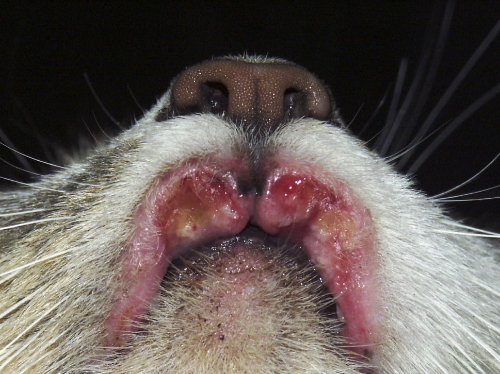
Tumor on your cat's lip
Tumors on a cat’s lips are not very common. But when we see it, it is almost always a senior cat. Normally, cells start multiplying when needed. And they stop multiplying as soon as there are enough cells. With tumors, they multiply uncontrollably and do not stop. This creates a proliferation of tissue that gives your cat a swollen upper lip. Do you suspect that your cat has a tumor on its lip? Then it is best to go to your vet.
How do you treat a swollen upper lip in your cat?
Exclude insect stings
Has your cat’s upper lip suddenly become very swollen in an hour? Then you have to see if you also see a small hole in the middle. There is a good chance that this is an insect sting. If it developed quickly, it is either an insect sting or an allergic reaction. You can watch this for 24 hours. The swelling will probably be a lot less by tomorrow. However, don’t leave your cat unattended. There is a chance that the allergic reaction will spread or that he will have an allergic reaction to the sting. In that case, his entire face may swell including his throat and airways. This can cause him to suffocate, so it is important that someone stays nearby to keep an eye on him.
Dental inspection
Does an insect sting seem unlikely? Then you check all the teeth in your cat’s mouth. Especially in the area of the swollen upper lip. Also take a good look at the inside of the lip to see if you don’t see any inflammation there. Is tartar the cause of the inflammation? Then it is best to visit your vet. Your cat usually needs to have a dental treatment under anesthesia. If the amount of tartar has not yet caused extreme inflammation, you can also clean it yourself with a tartar scraper in some cats. See how you can do this on the page about tartar.
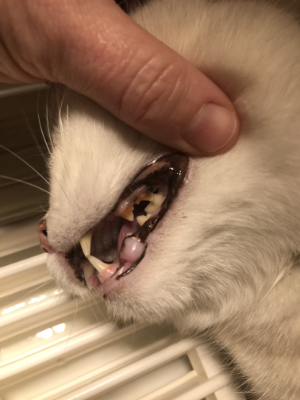
Examine the inside of your cat's lip
You have probably already done this during the dental inspection. But in any case, it is important to check the inside of your cat’s lip to see if there is a wound there. If so, it almost always contains an infection. You can treat this wound infection on the inside of your cat’s swollen lip with hydrogen peroxide. Put this 3 times a day on a cotton swab and dab it on the wound on the inside of your cat’s lip. You must do this for at least 5 days. Usually you will see improvement after a day or 2-3. Deterioration should not occur from day one.
LOOK FOR WOUNDS ON YOUR CAT'S BODY
On your cat’s body??? Yes! So not just on his swollen upper lip. Very often, the cause of an abscess is a fight. And very often the cat also has very small wounds or scratches in other places on its body. If you see it, chances are your cat’s swollen upper lip is caused by an abscess. Does he have multiple wounds on his body? Then check if they are healing properly. It is also wise to measure your cat’s temperature. Cats with an abscess often develop a fever. So does your cat have a swollen upper lip, wounds on his body and a fever? Then there is most likely an abscess.
You can measure your cat’s temperature with a human rectal thermometer. A rectal thermometer for humans can be used in cats. Put a little bit of vaseline on the top of the thermometer before you put it in his anus. A normal temperature in a cat is between 38.0ºC and 39,5º Celcius (100.4º to 102.5º Fahrenheit). If it’s above than your cat has a fever.
How do you treat an abscess?
When there is an abscess, it is best to take your cat to a vet. He can possibly open the abscess, prescribe a course of antibiotics and give your cat a painkiller. However, abscesses also break open on their own, so that the infection also resolves itself. In most cases, at least. However, the healing will take longer and your cat will be in pain longer.
To speed up this process, you can see if you see a small spot in the middle of the swelling with a slightly different skin structure. That is the place where the abscess will break open. By squeezing the abscess like a pimple where you exert pressure towards that weak spot, there is a chance that you will break the abscess open. This can be painful for your cat and don’t be alarmed at the amount of foul, smelly mess that will come out. But once the pressure is off the abscess, your cat will feel a lot more comfortable. Also let your cat wash his swollen upper lip a lot if he wants to. While doing this he massages the pus out so it will heal faster. Does the lip swell again after opening? Then you will have to go to a vet for a course of antibiotics.
is there a wound on the outside of your cat's lip?
Do you see a wound on the outside of your cat’s swollen upper lip? Then that wound may be infected and that is the cause for the swollen upper lip in your cat. You can then treat this wound with honey ointment. Honey has the effect that it makes a very small amount of hydrogen peroxide on the wound, so that bacteria will no longer grow. Honey also stimulates wound healing. Apply the honey ointment to the wound 3 times a day for 5-7 days. After about 2-3 days, the swelling of the upper lip should start to decrease and the wound should start to look better. Does it not improve after a week? Then you will have to take him to your vet.
Treatment of the eosinophilic granuloma complex
This condition is very persistent to suppress. Often a cat needs lifelong medication to counteract it. In any case, you can try for yourself whether an allergenic diet will be the solution for your cat. You can read more information about this on the page about inflammation of your cat’s lip. But know that it is a difficult problem and there is no quick fix.
Treatment of a tumor as the cause of a swollen upper lip in your cat
As mentioned, a tumor is a problem in cell division. Unfortunately, you cannot solve this yourself. You should contact your veterinarian for a solution. He or she will take some cells from your cat’s swollen upper lip with a needle. This usually does not require anesthesia. These collected cells will be sent to a laboratory to make a diagnosis. If it is a benign tumor, then it does not need to be removed or treated unless it causes your cat mechanical problems. For example when eating. If there is cancer, it is important to know which form of cancer and what the future may bring. Based on this, you can then draw up a plan together on how to treat your cat. And know that not everyone decides to actually treat.
